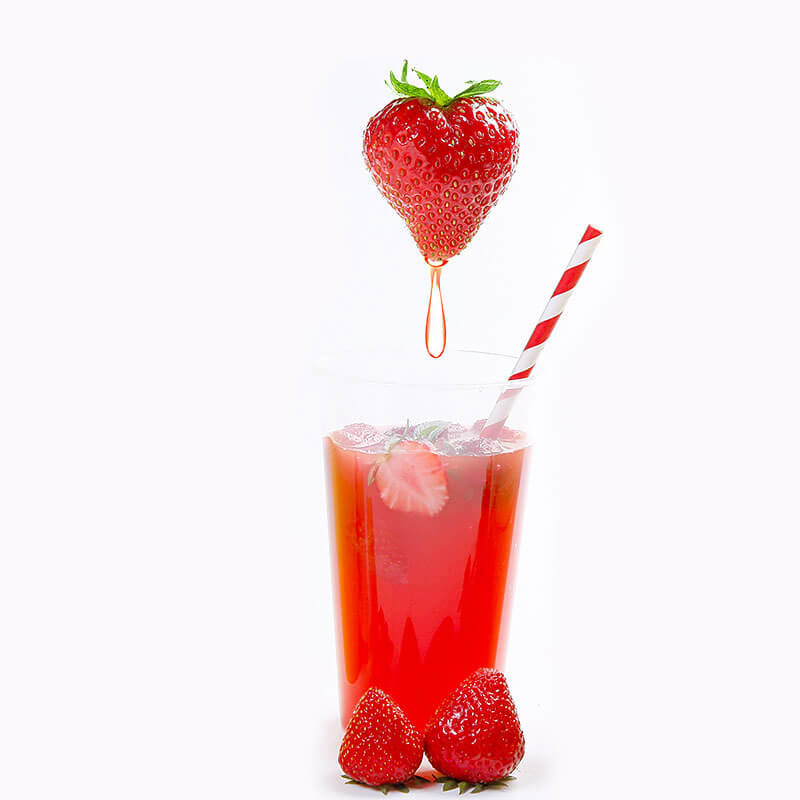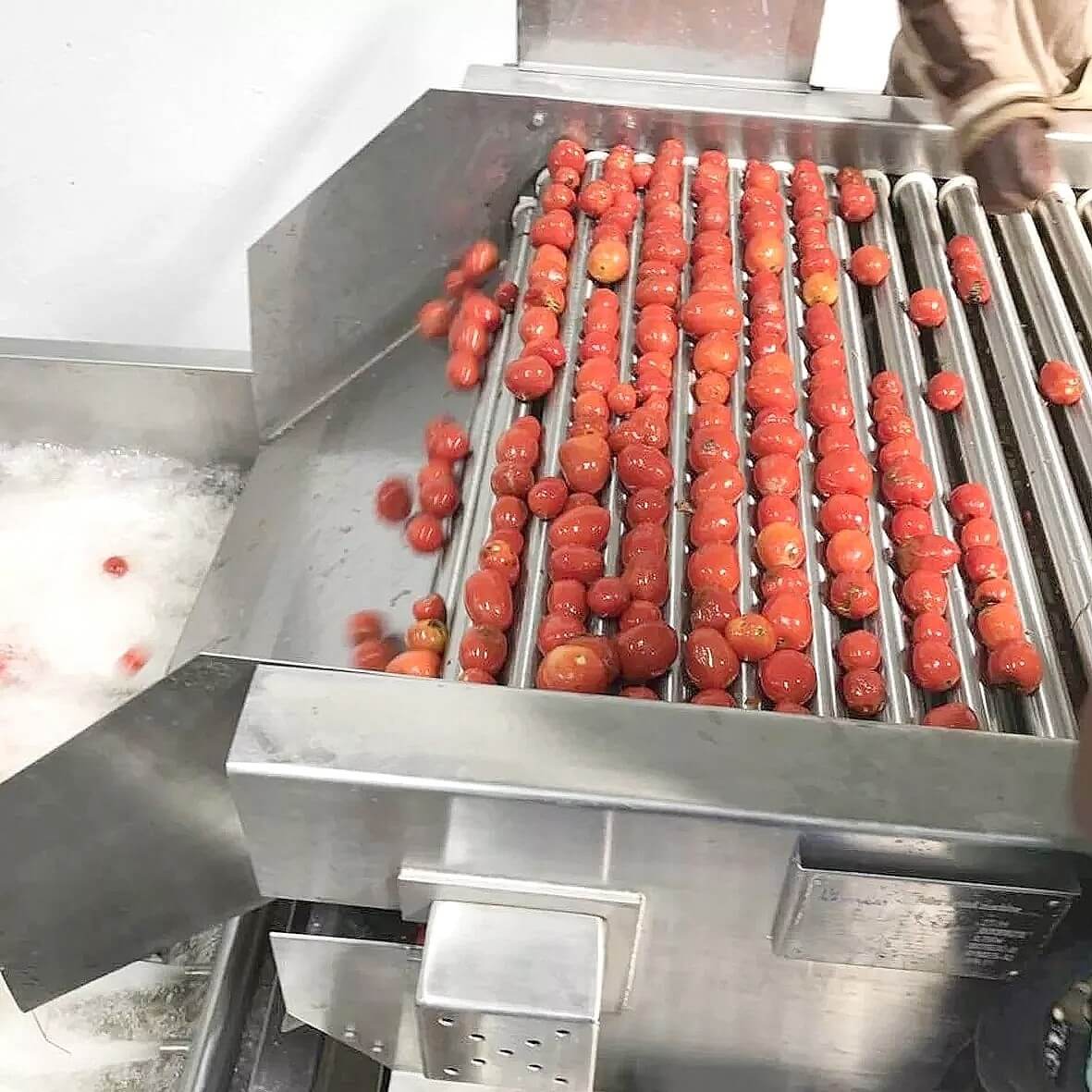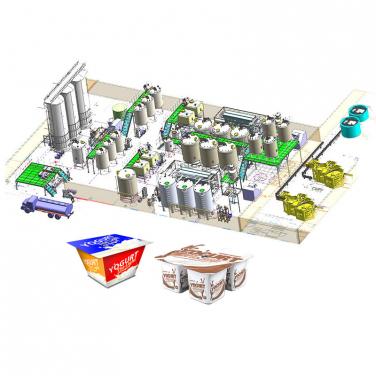
About fruit wine production line
Fruit wine is a fermented wine that uses fresh fruit juice or fruits as raw materials, using processes such as adjusting acidity and sugar to ferment some or all of the raw materials into a lower alcohol content. Finished fruit wine usually contains a large amount of polyphenolic substances, which can effectively prevent fat from accumulating in the body for a long time. At the same time, fruit wine contains a large amount of amino acids and other substances. The alcohol content of fruit wine is much lower than that of common wine and Baijiu. Generally, the alcohol content of fruit wine is between 5% and 10%.

Current status of fruit wine brewing technology
The geographical climate of different countries around the world is different, and many places have rich fruit resources, which also provides an important material basis for fruit wine brewing. In recent years, the development speed of fruit wine breweries has been very fast. According to the existing selection criteria for fruit wine, according to the different raw materials, fruit wine can be divided into berry, kernel fruit, citrus, stone fruit, melon and mixed fruit. The typical representative of kernel fruit wine is Cider, the representative of berry fruit wine is wine, the representative of stone fruit wine is green plum, and the citrus fruit wine includes citrus, pomelo, orange and orange. The representative of fruit wine is watermelon. Based on the current market situation of fruit wine, mixed fruit wine is also quite common.
The brewing process of fruit wine usually involves selecting raw materials, cleaning raw materials, making fruit pulp, adding color fixatives to protect the original color of the raw materials, blending ingredients, adding yeast, fermentation, subsequent fermentation, gelatinization, clarification after filtration, adjusting sugar and acid, pasteurization, and bottling the finished product.
1.2 Fruit Wine Brewing Technology
From the current overall process of fruit wine brewing, microbial resources are currently in a relatively scarce state, and relevant scientific research institutions have not developed yeast with good fermentation effects for a specific variety of fruit wine. Besides wine, it has a more specialized strain that supports fermentation. The common strains of Cider include sweet Gree, sweet wheat, Dabila, etc. The other ciders have not formed special microbial varieties.
The main fermentation technology is a component of microbial technology, and the fermentation effect of fruit wine is closely related to temperature. When the temperature is low, the production efficiency of yeast strains will be in a relatively low range, resulting in a slower fermentation speed and significantly reduced utility. The pH value is a key indicator value that reflects the activity, growth, and reproduction of fermentation yeast. Reasonable control of the acidity and alkalinity of fruit juice during fermentation can improve a good breeding environment for yeast. It should be noted that the fermentation broth has poor buffering capacity and is sensitive to changes in pH values. Detecting pH in the fermentation broth can better reflect the living conditions of the fermentation bacteria. When the fermentation bacteria are hungry, the pH of the fermentation broth is higher than the predetermined value, and a certain amount of sugar can be added to it to awaken the working state of the fermentation bacteria. Excessive sugar content can cause a significant decrease in pH value. In the actual industrial production process, it is necessary to maintain the pH value of yeast within a certain range, which is also one of the key factors for the quality of fruit wine brewing results. The inoculation amount of yeast also plays an important role in the fermentation effect, and the inoculation amount of yeast is inversely proportional to the fermentation time of yeast. However, in actual production, if the inoculation amount exceeds a certain range, the fermentation speed of yeast is too fast, which can easily cause unnecessary waste of raw materials; If the inoculation amount is too small, it will significantly increase the fermentation time of yeast, which is easy to contaminate the yeast and cause a decrease in the overall quality of fruit wine.

The development speed of acid regulation technology for fruit wine is also relatively fast, with common methods such as chemical methods, microbial degradation methods, electroosmosis methods, and low-temperature freezing. Chemical methods usually use alkaline salts to effectively react with acids in fruit juice to achieve acid lowering effects. Common alkaline salts include K2C4H4O6, Na2CO3, K2CO3, KHCO3, and other slightly alkaline salts. In practical operation, KHCO3 and K2CO3 are particularly effective in reducing acid. The above two salts can not only effectively reduce the amount of titrated acid, but also significantly neutralize Malic acid. The low-temperature freezing method was first used and the effect is relatively obvious. With the continuous development of chemical science, microbial acid reduction methods have gradually been widely used in practical production. Taking Hai Hong Guo as an example, by tasting the finished wine, Hai Hong Guo juice has a high acidity and a slightly acidic taste, so it is necessary to focus on adjusting the acidity of the original solution. Chemical reagents such as Ca CO3, KHCO3, and citric acid can be used to increase the pH value of the original solution, providing the best environment for yeast fermentation. Expert research has found that before fermenting 8.5 ° sea red fruit wine, it is necessary to adjust the pH value and sugar content of the raw materials, which can be controlled around the values of 3.5 and 15%. The breeding environment of yeast is suitable, so that the fermentation work can also be carried out smoothly.
1.2.3 Clarification techniques
At present, the development prospects of the fruit wine industry are promising, and the market has high requirements for the quality of fruit wine. The main process flow of the chemical clarification method is to add existing chemical clarification reagents to the juice, thereby achieving the process of juice clarification. At present, Pectinase, gelatin, chitosan and diatomite are widely used, and these reagents have obvious effects in actual production. Some experts believe that the effect of compound clarifying agent is the best, because the effect of chitosan is better than that of diatomite, gelatin and Pectinase. Placing the material in a closed container for a period of time to achieve clarification is the most primitive method of using natural clarification.
1.2.4 Sterilization technology
From the perspective of sterilization technology, the sterilization technology of fruit wine mainly includes chemical sterilization, irradiation sterilization, and microwave sterilization, which mainly causes bacterial death due to heat. It should be emphasized that irradiation sterilization mainly utilizes irradiation techniques, such as X-ray sterilization, ultraviolet irradiation sterilization, and electron ray sterilization. The main method of chemical sterilization is to add an appropriate amount of microbial inhibitors during the brewing process of fruit wine for sterilization. The thermal sterilization technology mainly adopts the process of pasteurization to kill bacteria, which instantly kills bacteria through ultra-high temperature.
2.1 Few high-quality raw materials and fruits
Through practice and research, it has been shown that the quality of fruit wine requires higher processing techniques. At the same time, fruit wine also has high requirements for the transportation, picking, and storage of fruits. At present, domestic fruit resources are very abundant, but in actual picking, due to different harvesting methods and time nodes of fruit farmers, the variety of high-quality fruit wine brewed is limited, which will have an impact on the quality of fruit wine. The limited variety of high-quality fruit wine is one of the important reasons for the lack of distinctive and high-quality fruit wine in China, which has a significant restraining effect on the development of high-end fruit wine in China.
2.2 Few types of yeast used for fruit wine fermentation
At present, the special fermentation yeast for domestic fruit wine is mainly concentrated in Cider and wine, and there are few other types of high-quality fruit specific yeast, which obviously restricts the development of other types of fruit wine.
2.3 Unstable product quality
The key to seizing the market and stabilizing customer sources lies in the quality and stability of fruit wine, which is particularly important for high-end fruit wine. Many factors affect the quality of fruit wine, and it is difficult to stabilize the quality of fruit wine. At present, the production process of high-end fruit wine in China is not mature, and there are many unstable factors. Quality fluctuations have led to a downward trend in the number of fixed consumers, which is unfavorable for the development of high-end fruit wine.
2.4 More and more fruit wine additives
At present, there are many fruit wine brands, with over 90% of fruit wines containing over 5 types of additives. At present, consumers pay more attention to health. The market share of fruit wine containing synthetic pigments, artificial essence, thickeners, sweeteners, condiments and other additives is declining. Overall, the content of additives in fruit wine production is too high and the categories are relatively complex.
Innovative ideas and development directions for the production process of fruit wine
At present, fruit wine processing enterprises need to coordinate and transform the entire process by selecting high-quality and easy to grow fruit varieties for the cultivation and cultivation of high-quality fruit varieties. Fruit wine enterprises, in collaboration with research institutes, cultivate high-quality varieties of fruit suitable for planting. They provide timely training and guidance on the planting techniques and precautions for fruit wine specific fruits to fruit farmers, and timely pick and transport the fruits to the factory to maintain their freshness.
At present, there is still a certain lack of research on specialized yeast for fruit wine. It is necessary to enhance the research on various types of fruit wine yeast, analyze and compare the specialized yeast suitable for different types of fruit wine fermentation, and produce certain differences in aroma components. It is necessary to use specialized yeast that is more conducive to fermentation in order to ferment more high-end fruit wine products. At present, the use of specialized yeast can use immobilized yeast geothermal technology to stimulate the quality of fruit wine and produce higher quality results.
Aroma composition is one of the key factors affecting the quality of fruit wine, playing a crucial role in the market sales price and market share of fruit wine. Sales volume is related to many factors such as production efficiency, sales volume, aroma composition, raw material cost, etc. At present, the analysis of components can continuously improve production processes and accelerate the exploration and analysis of aroma components in fruit wine. In the production process of fruit wine, a series of physical methods such as photo aging, electric aging, and magnetic aging can be used for determination. At the same time, chemical methods such as catalysts and micro oxidation can be used to improve the aging efficiency of fruit wine, continuously improving the overall production efficiency of fruit wine. At the same time, the aging efficiency of fruit wine will also continue to improve.
Currently, with the deepening and understanding of consumers' concept of green and environmental protection, more and more consumers are choosing green and environmentally friendly drinks. Green organic fruit wine can meet consumers' needs. In the process of fruit wine processing, enterprises need to continuously innovate production processes and techniques, and develop production and storage methods with little or no additives. In the production of innovative organic fruit wine, it is necessary to fully consider and improve the production, processing, transportation, composition, storage, packaging, and other aspects of raw materials. In the actual processing of fruit wine, efficient sterilization processes can be used instead of the original additives, which will significantly increase the shelf life of fruit wine and reduce the total amount of preservatives used in organic fruit wine. This is of great significance for the improvement of organic fruit wine.
At present, the prospects of the fruit wine market are bright, but there is also significant market competition. At present, there is no leading brand for fruit wine. While continuously researching and innovating fermentation methods and products, it is necessary to create unique products and utilize regional characteristics to create unique fruit wine. With the increasing market demand, the research and development of fruit wine processing technology is also ongoing, requiring interdisciplinary teams to cooperate with high quality. In the future, fruit wine brewing technology will move towards a more mechanized, professional, and evolutionary direction.



